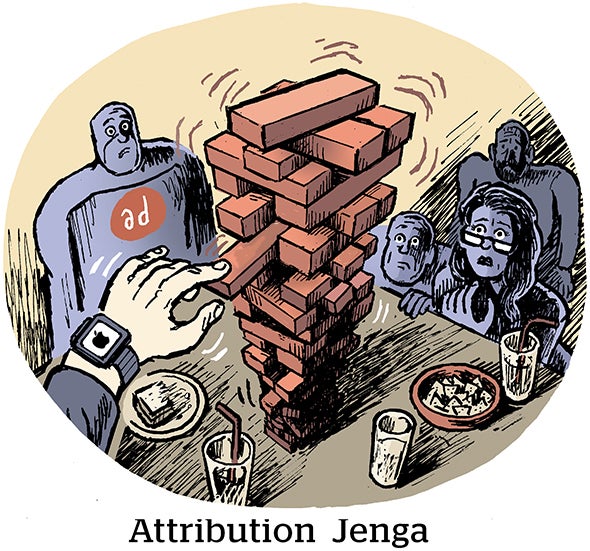As we wrote last month during our analysis of the Writer’s Guild of America strike, the 101 day work stoppage led to "$1.3 billion in lost revenue by Hollywood-dependent businesses and $750 million in lost wages to production crews of various film and television projects put on hold during the 14 weeks. And, in a report issued just yesterday by Jack Kyser, the chief economist for the Los Angeles County Economic Development Corp., we must add an additional $500 million to the sum of those for a grand total of $2.5 billion." As with any strike, the writers had specific goals they wanted to achieve, one of which included increased compensation from the use of their material in digital distribution, primarily through the Internet. The writers’ strike, which has impacted viewers of television the greatest, could in many ways be considered a reaction to the unanticipated wealth that DVDs created for all but the writers, or perhaps better said, created for writers too but at such a small fraction in comparison to the value they felt they brought. Unfortunately, for the writers, their strike gives them a bigger piece of the digital pie, but that pie in total might barely equal $2.5 billion before their cut, so it seems they spent $2.5 billion on a three-year contract that will earn them some piece of $2.5 billion, while the shiny discs that fueled their fury will gross approximately $17 billion, of which they receive the same amount as before. The writers got what they wanted but lost the war in some ways.
History of Unionization
A single writer has a small voice, but together, as we saw, they have an enormous impact, the ability to cost their employers billions and make their case known to the entire entertainment consuming world. Their world, a unionized one, comprises in many ways a dying breed with an incredibly lengthy history. Not being labor experts, like high school students, we turn to the encyclopedia for more. According to Encarta, today’s union can trace their origins back almost 1000 years, as ,"The first associations of workers, merchant guilds and craft guilds, formed during the Middle Ages in Europe." But, "The earliest actual labor unions arose in Western Europe and the United States at the end of the 18th century and the beginning of the 19th century," and "They were formed by skilled crafts workers in reaction to the rapid changes in the economic environment brought about by industrialization." Employees weren’t dealing directly with the end buyers but worked for large factories that left them incredibly dependent upon their employers. Looking at the United States, it took a while before unions gained traction, being seen as a threat to commerce and finding themselves on the losing end of countless court decisions from the nation’s highest court. All that changed when the Great Depression hit and the ultimate passage of the National Labor Relations Act of 1935 and subsequent Labor-Management Acts beginning in 1945, at which time one-third of all employees belong to unions.
Union membership has fallen from a high of one-third to perhaps fewer than ten-percent of employees today with the most precipitous decline beginning in the 1980’s and through the 1990’s. Automation and globalization have certainly played their part as companies need fewer factory floor workers and the availability of workers based outside the United States has opened up access to alternate workforces as well as increased the pressure on domestic firms to keep costs low. Combine that with the growing trend toward the United States as a service industry, a sector which has historically seen little traction by unions, but the real reason might be economic. Unions came about and gained their strength through either poor working conditions or a poor economy. In recent decades, each has continued to improve, with companies today providing benefits unseen before as unemployment remains low and the competition to keep talent increases. Gone though, are the retirement and health benefits enjoyed or at least promised to the baby boomer generation, replaced instead with shorter-term conveniences.
A Look at Wal-Mart
Unions might not exist among doctors, lawyers, account managers, etc., but they still do for many in rank-and-file jobs where the company has the ability to quash the voice of the workers, and no company has achieved the scale of Wal-Mart. Sam Walton opened his first store in 1962, and today his legacy includes four different types of retail stores – Wal-Mart Discount Stores, Wal-Mart Supercenters, Wal-Mart Neighborhood Markets, and Sam’s Club – and is now the largest retailer in the entire world. Perhaps ripe for unionization, they are the anti-union company with not one store or department being unionized.
Wal-Mart has 1,000 discount stores in the United States, 2300 Supercenters, 120 Neighborhood Markets, and 584 Sam’s Clubs. The smallest division the Neighborhood Markets averages "only" 42,000 square feet, where as the better known discount stores, Supercenters, and Sam’s Clubs span 100,000 to 187,00 square feet. Not only that, the smallest of them, the small-business oriented Sam’s Club carries 5,500 items. The largest, the Supercenters, stocks on average 142,000 different items in addition to its "specialty shops," assuming you count McDonald’s or Subway restaurants in that category, although they most likely refer to the vision centers, portrait studios and one-hour photo labs, hair salons, banks, and employment agencies. Add all four retail divisions together, and Wal-Mart has almost 4,000 retail stores in the United States, in addition to a rapidly growing presence outside the US which numbers now at 13 markets and more than 3,000 stores – primarily in Latin and South America with a burgeoning imprint in Asia and the United Kingdom. International employees number greater than 600,000. That represents about one-half the number of employees Wal-Mar has in the US, approximately 1.3 million, and combined – domestic and international – the company will soon top almost 2 million who work for their stores.
Now, for the fact that is just mind-numbing. Wal-Mart has more than 137 million shoppers each week. It’s one thing for an ad network to have that reach, but to have that many bodies in the stores is simply astounding. It also translates to some significant earnings. In February of this year, Wal-Mart announced its results for its most recent quarter ending in January ’08. Net sales were $106.269 billion, an increase of 8.3 percent over the same period one year prior, and income from continuing operations topped $4 billion, an increase of 4.0 percent from the same period a year ago. Its full-year earnings came close to an absolutely massive $380 billion. The company has a current market cap of $201 billion. Were the company viewed as the high growth entity that Wall Street views Google, the company’s value would top $400 billion as it trades at price to earnings ratio one-half that of Google – just north of sixteen to Google’s thirty-three. It matches Microsoft, in that respect, who also trades at a price to earnings ratio of slightly more than sixteen and has a market cap of $266 billion at the time of writing this. And, looking at Wal-Mart helps put Google’s success into perspective. In less than a decade a Google has grown to within 1/3 the size of Wal-Mart with respect to its yearly profit – four billion to twelve billion – and has done so on a global workforce that is one-hundred times smaller.
A read through Wake-Up Wal-Mart provides some bone chilling facts and has even spawned a documentary by the same name, but it hasn’t spawned enough outrage to appreciably curb the company’s behavior or raise the level of awareness such that a significant number of people have taken issue with the store’s practice. Why? Because, despite employing more people than any other in the United States, 1.3 million (enough people combined to qualify as a Top 10 US city), people will look the other way to save themselves money. Short-term thinking always beats out long-term interest, especially in capitalist societies.
Wal-Mart might damage the environment, cost tax-payers more, pay less than welfare, fire those who try to organize, and have more space than the Petagon that sits vacant, but so long as the average shopper can get what they need there today, quickly and easily, they will not think twice about the downsides, unless of course they take a job there and try to pay for medical coverage. Only then, when it becomes personal and short-term do people pay attention. It’s all about the end-user, not the employee and not other businesses, like those that Wal-Mart squeezes into outsourcing and/or oblivion by trying to meet the short-term consumer’s greed, that spawns outrage – something we’ll see when exploring the newest giant to screw over its vendors, Google.
Continue to Power to The People – Part 2



